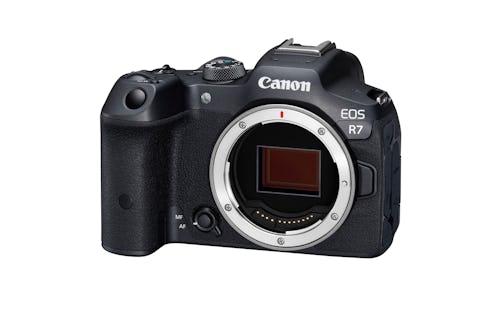
With the introduction of the EOS R7 and the EOS R10, Canon has all but converted its DSLR best-sellers into mirrorless options. Canon introduced the two new APS-C mirrorless cameras, which are the first crop-sensor lenses in its EOS R series, along with two lenses designed for the smaller sensor.
Previously, the EOS R series only featured full-frame mirrorless cameras and the steeper price tags that came with them. APS-C sensors are smaller than its full-frame counterparts, generally resulting in fewer megapixels and worse low-light performance. But, camera makers like Sony and Fujifilm have been making APS-C mirrorless cameras that are more affordable but can still shoot high-quality images.
Canon is also showing some love to the APS-C format, with the EOS R7 and the EOS R10. If you’re familiar with Canon’s lineup, the EOS R7 is pretty comparable to the 7D and the EOS R10 feels like Canon’s popular Rebel series for beginners.
Solid specs —
Canon borrowed the subject detection autofocus feature from its $6,000 EOS R3 and ported it to its two new cameras. The EOS R7 and EOS R10 both have mechanical shutters that can hit 15 fps, but you can get up to 30fps when shooting with the EOS R7’s electronic shutter.
The EOS R7 is the more capable camera of the two, since it offers 32-megapixel photos and 4K60p video. Canon also gave it two memory card slots, in-body image stabilization, and dust and moisture resistance. The EOS R10, however, is definitely more on the hobbyist side with its 24-megapixel photos and 4K video up to 30p. Unlike the EOS R7, the EOS R10 doesn’t have in-body image stabilization, which is a major downside.
To go with these new ASP-C cameras, Canon announced two new zoom lenses, the RF-S18-45mm F4.5-6.3 IS STM and the RF-S18-150mm F3.5-6.3 IS STM. These lenses were made specifically for these APS-C mirrorless cameras, but can also be used on full-frame cameras, albeit with some crop factor math involved.
Totally worth it —
The EOS R10 by itself will cost $980, while the bundle with the 18-45mm lens will go for $1,099, and the bundle with the 18-150mm lens will be $1,379. The EOS R7 will cost $1,499 by itself, but $1,899 when bundled with the 18-150mm lens. On their own, the 18-150mm lenses will cost $500, while the 18-45mm lens will go for $300. Canon said all of these new products will be available in late 2022.
Without having used either camera, they both seem like solid options on paper in terms of price and power. Like the DLSR options they’re essentially replacing, the EOS R10 seems to be catered towards those looking for an affordable starter camera, while the EOS R7 is meant for those looking for something more serious but still below the professional-grade cameras.







